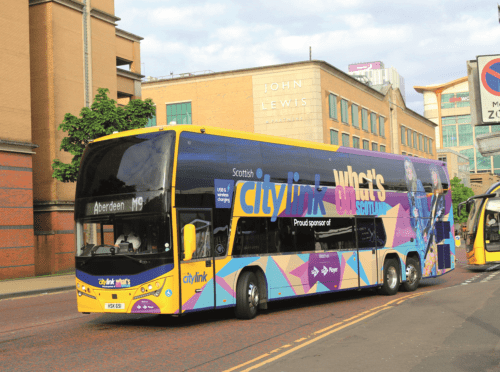
Jonathan Welch continues his look at the operations of Scottish Citylink
In part one in issue 1580, we started off by visiting Citylink’s busy hub at Broxden on the edge of Perth, where its ‘Saltire Cross’ network comes together to allow passengers to make connections to other services. Watching the bustle of coaches arriving and departing, I chatted with Operations & Service Delivery Manager Macsood Carrie about the network and the challenges of keeping people moving across Scotland and beyond.
We joined a megabus-liveried Van Hool to make the short journey south to Glasgow, enjoying the view from the top deck, including deer in distant fields as we made our way past Stirling and into another of the company’s hubs, Glasgow’s Buchanan Bus Station. The bus station is also home to Citylink’s head office, where I sat down for a chat with Managing Director Mark Venables and Operations Director Simone Smith. We were also joined by Katrina Scott and Jonathan Walton from long-serving Citylink contractor Edinburgh Coach Lines.
I started by asking Simone about her background, and her current role with the company. “I’ve been here for three years now,” she explained. “Before I took on this role, I was an Operations Manager at various Stagecoach depots across the UK. I began my career in 2012 on the Stagecoach graduate programme, straight from University. Of course things changed with the merger in September as we’re not employed by Stagecoach now, we transferred across to Scottish Citylink. My role here is to oversee the operations and deal with any issues that arise, as well as oversee the team here in Glasgow and across the network. We’re also responsible for customer service and social media for the UK.”
Changes
[…]By subscribing you will benefit from:
- Operator & Supplier Profiles
- Face-to-Face Interviews
- Lastest News
- Test Drives and Reviews
- Legal Updates
- Route Focus
- Industry Insider Opinions
- Passenger Perspective
- Vehicle Launches
- and much more!


